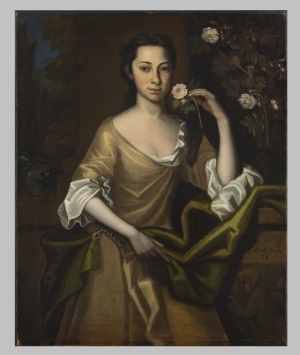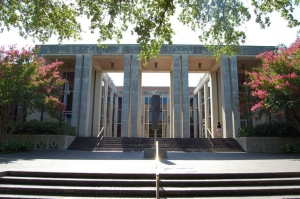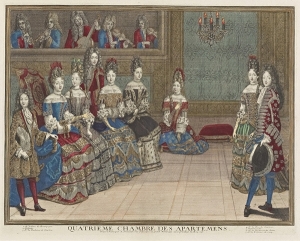|
Displaying items by tag: Research

The Fine Arts Museums of San Francisco have received a donation of over 200 Native American artifacts from the Thomas W. Weisel Family Art Foundation. The gift, which includes important textiles and ceramics, will significantly enhance the museums’ Arts of Africa, Oceania and the Americas collection. The donation also includes an unspecified endowment for the collection’s conservation and research.
Weisel, a pioneer of Silicon Valley’s tech industry, began collecting Native American artifacts over 30 years ago. His acquisitions have been guided by the California-based artist and Native American art scholar, Tony Berlant. His collection spans more than 1,000 years of artistic creativity and includes artifacts from the American Southwest, the Northwest Coast, and the Great Plains. Weisel is also an avid collector of postwar American art.
A portion of the gift will be displayed in the exhibition “Lines on the Horizon: Native American Art from the Weisel Family Collection,” which will open on May 3 at the de Young Museum.

In the first exhibition of its kind in 50 years, the DeWitt Wallace Decorative Arts Museum, one of the Art Museums of Colonial Williamsburg in Virginia, is presenting the exhibition "A Rich and Varied Culture: The Material World of the Early South." The show, which features more than 400 objects drawn from the Colonial Williamsburg collections, will include a dozen categories of media and represent four geographic regions of the South -- the Chesapeake region, the Carolina Low Country, the Backcountry South, and the Gulf Coast. Works from 10 other institutions and 14 private collections will also be exhibited.
Together, furniture, paintings, prints, metals, ceramics, mechanical arts and arms, architectural elements, archaeological objects, rare books, maps, costumes, accessories and musical instruments will tell the story of the region’s population from the 17th century through 1840 as it expanded westward and southward toward the frontier. Each of the works on view has undergone exhaustive research, which has yielded some unexpected findings. For example, a painting of Frances Parke Custis, on loan from Washington and Lee University, was revealed to be the work of the Brodnax Limner, a little-known artist who worked in Virginia during the 1720s.
Ronald L. Hurt, the Colonial Williamsburg Foundation’s vice president for collections, conservation, and museums and its Carlisle H. Humelsine Chief Curator, said, “The early American South has long been depicted as a society that produced almost none of the objects used by its substantial populace. However, the opposite is true. Southern artists and artisans generated a vast body of material in virtually every medium. The abundance and diverse cultural resonance of these goods will be powerfully conveyed by the objects assembled for this exhibition.”
"A Rich and Varied Culture: The Material World of the Early South" was entirely funded by Williamsburg residents, Carolyn and Michael McNamara. The exhibition will be on view at the DeWitt Wallace Decorative Arts Museum for five years, until 2019.

The National Center for Art Research at Dallas’ Southern Methodist University released its inaugural report assessing the health of the nonprofit arts sector. The comprehensive report, which is available online at smu.edu/artsresearch, was created by integrating organizational and market-level data and assesses the industry from multiple perspectives, including sector/art form, geography, and size of the organization.The report is the first of its kind for the arts.
The National Center for Art Research is helmed by faculty at Southern Methodist University’s Meadows School of the Arts and Cox School of Business in collaboration with the Cultural Data Project and a number of other national organizations. The Center’s first study was able to determine the extent to which managerial and artistic experience and decision-making impact an organization’s performance.
The National Center for Art Research’s director, Dr. Zannie Voss, said, “In this first report we took a deep dive into eight of the areas of performance identified, and by studying these averages, tried to answer the question ‘all else being equal, what makes one arts organization more successful than another?’ Some of the findings were as one would expect, but we did find some surprises. Perhaps more than any other industry, arts organizations are driven by managerial and artistic expertise. Being able to estimate the value of this expertise in an organization’s performance is the single most valuable result of our first study.”
In 2014, the Center will partner with IBM to launch an interactive dashboard that will be accessible to arts organizations nationwide. Participants will be able to enter information about their organizations and see how they compare to the highest performance standards for similar organizations. The website will also foster public discussion of best practices and solutions and offer an online resource library with helpful tools and templates.
One aspect of my research for the New-York Historical Society’s exhibit (see The Armory Show at 100: Modern Art and Revolution, pp. 150–159) was to identify and locate as many as possible of the over 1400 objects included in the 1913 exhibition. For major works by major artists, this was a straightforward task. But for minor works by major artists and for works by more obscure artists, it was not so simple.

After releasing about 6,400 high-resolution images for public use without fees or restriction back in August, The Getty Research Institute has released a second batch of works, bringing the total number of images available to approximately 10,000. The initiative is part of the Getty’s Open Content Program, which will make images from the Getty’s illustrious collection available for publications, research and a variety of personal uses.
The works recently made available on the Getty’s site include drawings, watercolors, artists’ sketchbooks, rare prints, architectural drawings and photographs. Before launching the Open Content Program, the Getty’s images were only available upon request, for a fee and carried certain terms and conditions. The images will now be available for direct download on the website, free of charge. Officials plan to keep adding works to the Getty’s site until all of the Institute-owned or public domain images are available.
Getty President and CEO, Jim Cuno, said, “This project goes to the heart of the Getty’s mission to share its collections and research as widely as possible. We look forward to seeing the ingenious, creative and thoughtful ways these images are being used.”

Sunset at Montmajour, a recently discovered painting by Vincent van Gogh, is officially on public view at the Van Gogh Museum in Amsterdam. Axel Ruger, the museum’s director, said, “We are pleased to be able to show this exceptional painting to our visitors, because a new discovery of this magnitude has never before occurred in the history of the Van Gogh Museum.” The work will be on view through January 12, 2014 as part of the exhibition Van Gogh at Work, which shows how in ten years’ time van Gogh developed into a unique artist with an impressive oeuvre.
On September 9, 2013 officials at the Van Gogh Museum announced that after extensive research, they were confident that Sunset at Montmajour was an authentic work by van Gogh. The canvas, which depicts a dry landscape in Van Gogh’s characteristically thick brushstrokes, had been stored for decades in the attic of a Norwegian home before becoming a research subject at the Van Gogh Museum. Scholars were able to trace the earliest history of the provenance of the painting while Oda Van Maanen, the museum’s restorer, used x-ray photos and computer analyses to determine the type of canvas and pigments used, which were consistent with the materials regularly used by Van Gogh. Museum officials had previously deemed Sunset at Montmajour as inauthentic because the artist had not signed it.
Along with Sunset at Montmajour, Van Gogh at Work includes some of the artist’s best-known works including Sunflowers and The Bedroom.

On Monday, September 9, 2013, the Van Gogh Museum in Amsterdam announced that after extensive research, they were confident that the painting Sunset at Montmajour was an authentic work by Vincent Van Gogh. Alex Ruger, the museum’s director, said, “A discovery of this magnitude has never before occurred in the history of the Van Gogh Museum. It is already a rarity that a new painting can be added to Van Gogh’s oeuvre. But what makes this even more exceptional is that this is a transition work in his oeuvre, and moreover, a large painting from a period that is considered by many to be the culmination of his artistic achievement, his period in Arles in south of France.” Sunset at Montmajour was painted in 1888 around the same time as Van Gogh’s seminal works Sunflowers, The Yellow House and The Bedroom.
The canvas, which depicts a dry landscape in Van Gogh’s characteristically thick brushstrokes, had been stored for decades in the attic of a Norwegian home before becoming a research subject at the Van Gogh Museum. Scholars were able to trace the earliest history of the provenance of the painting while Oda Van Maanen, the museum’s restorer, used x-ray photos and computer analyses to determine the type of canvas and pigments used, which were consistent with the materials regularly used by Van Gogh. Museum officials had previously deemed Sunset at Montmajour as inauthentic because the artist had not signed it.
Sunset at Montmajour will be on view at the Van Gogh Museum starting September 24, 2013 as part of the exhibition Van Gogh at Work.
The Willem de Kooning Foundation will sell 10 of the Abstract Expressionist artist’s paintings in an effort to raise over $30 million for an endowment that would support the organization’s research and scholarship endeavors. The works, which were created between 1983 and 1985, will be on view at the Gagosian Gallery in New York as part of the exhibition Willem de Kooning: Ten Paintings, 1983-1985 from November 8 to December 21, 2013.
John Elderfield, a consultant for the Gagosian Gallery and the Museum of Modern Art’s chief curator emeritus of painting and sculpture, will organize the exhibition. A portion of the sale’s proceeds will go towards hiring a team of researchers to compile and publish a catalogue raisonné for de Kooning as there is currently no detailed, annotated guide of the artist’s works.
Before showing signs of dementia in the late 1980s, the decade was a highly prolific period for the artist who painted over 300 canvases during this time.

In November 2013, the Dallas Museum of Art (DMA) will unveil its new Paintings Conservation Studio as part of the institution’s initiative to establish a more comprehensive on-site conservation program. Three long-term research projects that will utilize new analytical techniques and technologies will inaugurate the space.
The DMA’s new conservation studio features cutting edge technology including a digital x-ray system and will serve as a center for study and research as well as conservation treatments. The studio, which is enclosed by a glass wall, will be open to visitors so that guests of the museum can observe daily conservation activities.
As part of its efforts to improve its conservation capabilities, the Dallas Museum of Art has embarked on a number of projects with museums and universities in north Texas. The DMA is currently working with the Amon Carter Museum of American Art, the University of Texas at Dallas and the University of North Texas in Denton on various initiatives including the study of ultramarine pigment discoloration, the pigment and medium analysis of a work by Paul Gauguin, and the development of atomic sampling techniques for silverplated objects.
Maxwell L. Anderson, the Dallas Museum of Art’s Eugene McDermott Director, said, “The launch of these new conservation initiatives supports the DMA’s commitment to responsible stewardship of our collection, and the advancement of conservation research and practices in the region and across the museum field. We look forward to strengthening the DMA’s culture of conservation with the opening of this new facility and integrating conservation into the fabric of the Museum experience for the benefit and enjoyment of our community.”
In an effort to connect more directly with the global museum community, the Metropolitan Museum of Art will host the inaugural “Global Museum Leaders Colloquium.” The two-week program is slated to take place in April 2014 and will bring together over a dozen directors from Asia, Africa and Latin America. The colloquium will explore the major challenges that museum directors face including conservation issues and the well-being of the global economy.
The Met has been an international institution since its founding in 1870 and has continued to collaborate with museums across the globe through exhibitions, excavations, training and research projects. In addition, the museum runs a number of programs that bring international curators, conservators and scholars to New York.
Thomas P. Campbell, Director and CEO of the Met, said, “I wanted to establish a program that would strengthen our existing ties with our overseas peers and encourage a more focused dialogue between museum leaders.”
|
|
|
|
|